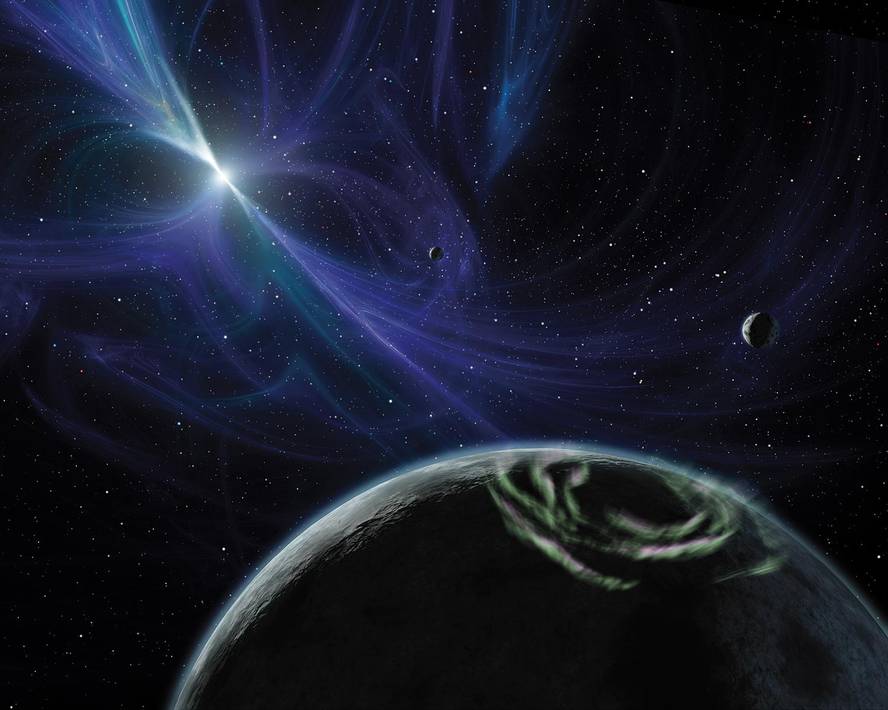Strong brake mechanism of the Pulsar binaries

Thomas M of the University of Bonn discovers that it stops pressing binaries of the category of milliseconds. Researchers Tauris. The journal Science has published that the diffusion of the magnetosphere of the pulsar is responsible for reducing the speed of rotation.
The pulsars are neutron stars that spin very fast; those in the category of milliseconds can rotate between 100 and 1000 revolutions per second, but at a time of their life they slow considerably the speed of rotation until they lose half of the energy of rotation and go from emitting X-rays to emitting radio waves. This occurs when they have absorbed almost all the matter of the star at their side. Precisely, the process of mass transfer is the one that confers upon pressing the capacity to accumulate matter and turn faster. But when the matter it can take is ending, the magnetosphere of the pulsar expands as the adjacent star decreases and, when it expands, the process of mass transfer is interrupted: instead of absorbing the material it attracts, it exploits in its environment, causing a brake to the pulse.





